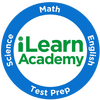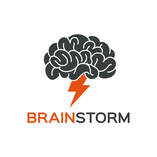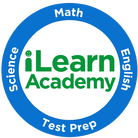If you’ve not come into our center lately, my name is Stein, and I’ve been the Assistant Director here since September. As I begin my third month in this position, I’ve decided to reevaluate our approach to the blogs we’ve been writing. We are genuinely excited about the ways this new format will allow us to communicate. If you have an event you’d like us to include or a question you’d like us to answer in the first edition of the new format next Friday, send me a message, I’ll be happy to hear from you!
To your academic success! -Stein [email protected] (847) 834-0791
1 Comment
Your essay is the only opportunity to speak directly to the admissions office to show how you think, what you value, and what makes you unique from the thousands of others competing for a spot at your dream school. Step 1: Brainstorm Start by considering specific experiences that you’ve had. If asked about how your background has shaped you as a person, ask yourself:
When reflecting, always remember that there are two sides to an argument. Your ability to recognize both the benefits and disadvantages of a situation shows college-level thinking skills. Step 3: Get Started The hardest part of writing any paper is getting started. This essay will take multiple drafts; the final result may look completely different than when you first started and that’s okay!
Additional Tips:
If you are interested in getting some help, iLearn Academy offers a college essay package. Our professional writing instructors help students revise their essays into stronger, more compelling pieces.
Package includes: - Two, one-hour sessions with an English instructor: Review your rough drafts to determine areas for improvement. - One full round of proofreading and edits: Get your essay proofread for content, structure, writing conventions and grammar. Call iLearn Academy at 847-834-0791 for more information! Free Application for Federal Student Aid (FAFSA) is now open. Here is a great article to help you maximize your college financial aid eligibility. It's also important to know that colleges and state grants have early deadlines so you don't want to miss out. Read more...
Before the Conference: Be prepared.
During the Conference: Stay positive
After the Conference: Monitor progress
If you found this article to be useful or if you have any follow-up questions, please leave a comment and we will be happy to offer our help! The start of any school year is tough for both parents and students. Here are 5 great tips to inspire parents to give kids the support they need:  1. Be aware. Parents who are in tune with what their children are doing, how they are feeling, and who they are with are better equipped to guide them through any academic, social, and emotional challenges. When a child is acting out or has become reserved, it is easy for parents to become frustrated. Offering a listening ear, acknowledging a child’s feelings, and guiding them in the next step are great ways to build trust. 2. Cultivate skill sets. Like many adults, children and teens can greatly benefit from organization, time management, and self-regulation strategies. Our world has become fast-paced so it is easy to focus on getting an assignment done, rather than getting it done well. 3. Foster your child’s creativity. Creativity carries great significance because it is an ability that teaches cognitive skills, encourages communication and problem solving, and involves imagination. People tend to be the most creative when they are doing something they enjoy. Parents can help their children develop creativity by encouraging them to experiment with hobbies and new ideas. Parents should follow their child’s interests as they change, look for opportunities that stem from these interests, and encourage free expression rather than fixed results. 4. Embrace mistakes. When students are learning new material, they will make mistakes. It is so easy for children to become discouraged, but it is crucial to master the concepts that students are struggling with before moving on. Instead of feeling shame for mistakes, parents should remind students that the mistakes are merely showing where more practice is necessary. Students will also benefit if their parents are patient and specific about errors. It is much easier to retain information when you know why something is incorrect. By showing how every mistake can be overcome, students will develop a more constructive relationship with mistakes, and push themselves to their full potential. 5. Get help early on. Don't wait until the first bad report card or stressful parent-teacher conference. Stay involved with your child's learning early in the school year and monitor how they are progressing in school. If you detect any signs of a struggle, a simple question of "how are you doing at school?' isn't enough. You should ask to see their assignments, check their online grades, and contact their teachers for any signs of a problem. Work with your child to help them improve or, if you are not readily available, get help from an expert such as a tutor send them to a learning center. Building a strong foundation early on is one of the keys to a successful school year. This PSAT 8-9 is coming up in October. Is your 8th-grader ready?
Illinois schools switched to this test in 2018 to help determine students’ high school class placement. In other words, your student’s performance on this test contributes to whether she will take advanced classes or general classes in high school, namely math and English. Preparing for this test takes time and, often, help from someone familiar with the test format and content. Help your student do his best by sitting down with him and making a study plan – no cramming, no stress. To study, he can review class notes, browse sample questions online or work with a tutor to master test concepts and take real practice tests. We strongly recommend your student take some real PSAT 8-9 practice tests so she becomes familiar with how the test is set up, what type of questions she will see and how much time she will have on each section. Now is the time to start studying, and test day is right around the corner. Here’s a checklist for you and your student in the days leading up to the PSAT 8-9 – and the big day itself! ☐ Review corrected tests, homework assignments and class notes from math class – including those from 7th grade. This is a great way to jog the memory and prepare for the test, as the test content is very similar to class content. ☐ Review parts of speech and grammar rules. Students likely spend most of their time in English class reading and practicing composition. This makes it easy to forget grammar and mechanics. IXL.com is a great way to review these concepts. Every iLearn Academy student has her own IXL login – ask your tutor if you don’t know the username or password! ☐ Take a full-length practice PSAT 8-9 with a timer and correct any missed questions. These tests can be hard to track down – talk to your child’s tutor if you’d like help with test prep materials. ☐ Make a test day kit or baggy with two sharpened no. 2 pencil with erasers and an approved calculator. Any standard calculator or graphing calculator will be fine. However, any calculator that accesses the Internet, makes noise, has a QWERTY keyboard, uses a stylus or contains paper tape is not allowed. (This includes laptops, cellphones and smart watches.) ☐ Make sure your student does not bring a recorder, compass, protractor, ruler, highlighter, colored pen or pencil, scratch paper, dictionary, snack or drink. ☐ Get a good night’s sleep the day before the test, eat a breakfast with protein and drink plenty of water. This helps your student’s brain stay sharp and focused. ☐ Standardized tests can be stressful, especially when the results feel important. It’s nice to remind your student that he is loved no matter what he scores – and that you have confidence in his abilities. Remember: grades and teacher recommendations also play a role in class placement, so this test is not the be-all-end-all! iLearn Academy’s test prep program uses real test materials and expert instructors to help your student achieve her best possible score. If you’d like our help making a test prep plan, choosing the right materials and filling in any gaps in your student’s learning, call 847-834-0791 today and ask about our proven PSAT 8-9 program. Completing homework consistently and accurately is essential to mastering important concepts and earning good grades.
Many elementary students understand new concepts in class, but quickly forget due to a lack of practice and repetition. Other students struggle to build the study skills to keep up with nightly homework assignments, especially in middle and high school. No matter your child’s age, iLearn Academy has a fall afterschool program to ensure he gets the homework help he needs. Run errands, exercise or simply relax while your child gets expert instruction from qualified tutors. For elementary students: Our all-inclusive afterschool program provides three hours of daily instruction in math, English and homework help. We offer quality care at a great value from 3 to 6 pm; you choose how many days a week your child attends. For middle school students: Our Homework Help Lab helps students finish assignments and build skills in a focused environment with help from knowledgeable tutors. Students can come any weekday between 3 and 7 pm for help with math, English, or both. For high school students: Our Test Prep Gym is designed to build test-taking skills for ongoing standardized test. Whether your student is preparing for the PSAT 8-9, PSAT/NMSQT, ACT or SAT, our program builds skills incrementally using real test materials and instructor feedback. Students can practice test-taking whenever they want from 4 to 7 pm Monday through Thursday. Our afterschool homework help and test prep programs take the stress out of nightly assignments and standardized tests. Best of all, they help your child form healthy study habits as they prioritize their to-do lists and tackle new academic challenges. Call 847-834-0791 today to learn more or enroll. Not sure if your child needs extra support? We’d love to sit down and review your student’s latest report card and diagnostic test results. Thank you for trusting us with your child’s academic success! Parents who start saving for college when their children are newborns will end up with 30 percent of their savings made up of earnings from their investments. Meanwhile, parents who start saving when their kids are in high school will only get 10 percent from earnings.
This shows that when it comes to college savings, parents who make a plan early come out ahead. Part of that plan is deciding how much you will contribute to your child’s higher education – and how much he will contribute. Another part is calculating how much you can save each month, and another is choosing where to put that money while your child grows. 529 Savings Plans are a common choice. These state-run accounts allow individuals to grow money tax free – and withdraw tax free, if they use the money for higher education expenses. Here are some frequently asked questions about 529 plans and their benefits: Will the money in my 529 plan affect my child’s eligibility for need-based financial aid? Yes, but barely. Only up to 5.64 percent of a 529 Plan’s value will be considered in calculations of need-based aid. In other words, you’d have to save about $15k before even $1k gets added to your expected family contribution. What can the money be used for? Eligible expenses include tuition, room and board, textbooks and computers. 529 Plans can also pay tuition at a trade or vocational school. These plans can be tricky if you try to withdraw money for other expenses – you’ll owe income tax as well as a 10 percent penalty on earnings. If a child gets a scholarship, however, you can withdraw up to the awarded amount penalty free. Is there a limit on how much I can save? There is no annual limit, although aggregate limits across states range from $235,000 to $520,000. Should I work with a broker to find a 529 Plan? Generally, no. Plans sold directly to families have lower annual costs and less expensive investment options. (Some investments come with a sales charge between 1 and 5.75 percent.) Whose name should the account be in? Put the account in a parent’s name, with the child as beneficiary. If you’re divorced, set up the account in the custodial parent’s name – this shakes out best for financial aid down the line. Try to avoid putting 529 Plans in a grandparent’s name. When they withdraw money, it will be treated as untaxed income and will affect the student’s eligibility for need-based financial aid. 529 Plans in the student or parent’s name, on the other hand, are counted as assets and do not affect financial aid. How should I allocate my investments? Most 529 are set up as age-based glide paths. That means as your child gets closer to college, your investments are automatically shifted among stock and bonds funds. These investments start at a higher risk level and gradually get more conservative as your child grows. Nonetheless, most plans offer conservative, moderate and aggressive investment tracks based on your personal risk tolerance. Not all plans define risk the same way, however. A plan labeled conservative could have 40 percent of your savings invested in equities – or it could have 80 percent. Be sure to do your research as you search for the best savings plan. For a personal college savings planning session with a certified financial advisor, call iLearn Academy at 847-834-0791 and ask about our support services for college-bound students. Just a year ago, Fortune magazine reported that parents in 28 U.S. states spend more on childcare each year than on college tuition.
That's a lot of money. In fact, Illinois families spend anywhere from 15 to 19 percent of their annual income on childcare. Despite all this spending, most childcare options don't offer the services parents need, like homework help and enriching activities. That's why iLearn Academy is launching an after-school childcare program with built-in math, English and writing instruction. Drop off your child - or have us pick him up from school - any day of the week. We'll help him finish homework, serve a healthy snack, build math and English skills and spend time outdoors. When you pick him up, you'll have the evening to spend time as a family - homework free. We'll like to learn more about your childcare needs through this 1-minute survey. We'll even give you $25 off your next tutoring session for participating. As always, thank you for trusting us with your child's care and education. The PSAT 8-9 is a standardized test that’s part of the SAT Suite of Assessments. Illinois students take the test in October of their 8th-grade year.
This test serves two purposes. First, it gives parents an idea of how their students are progressing in math and language arts. If a student gets a low percentile score, that’s a sign he may need some intervention to be ready for college placement tests like the SAT and ACT later on. Second, PSAT 8-9 scores help teachers decide whether a student would benefit more from advanced, general or remedial math and English courses in 9th grade. This test, along with grades and teacher recommendations, determines your child’s academic trajectory as she transitions from middle to high school. As such, it’s important that parents are aware of the PSAT 8-9 and its importance. If your student has the skill and desire to take advanced classes, it’s important that he prepares thoroughly for this test. How to Prepare for the PSAT 8-9 The PSAT 8-9 has three sections: Reading, Writing and Language, and Math. The Reading test contains passages that students use to find and analyze claims and evidence, evaluate words in context, and examine hypotheses and data. The Writing and Language test asks students to correct poorly written passages using their knowledge of grammar and syntax. The Math test contains both multiple-choice and grid-in questions. It measures students’ Algebra skills, as well as their quantitative literacy (which includes ratios, percentages, and proportional reasoning). All problems are word problems, and the test is divided into “calculator” and “no calculator” sections. This is not a test students can prepare for overnight, or even in a few weeks. To excel, students need to get comfortable with not only the test content, but also the way the questions are formatted. The best way to do this is to complete real PSAT 8-9 practice tests with the help of an instructor who’s familiar with the exam. Here are some helpful tips as your student prepares for the PSAT 8-9:
Why the PSAT 8-9 Is Important The PSAT 8-9 helps determine high school class placement, and class placement helps determine college admissions. For example, many collegiate STEM (science, technology, engineering, and math) programs prefer students who have completed AP calculus. If your child isn’t placed on an advanced math track, it can be difficult to get into an AP course and demonstrate high competency in math. It also can be tricky to switch from general courses to advanced courses after placement. Talk to your student about her academic goals. Have her write down what she’d like to be or what she’d like to study, and map out the classes she’d need to take in high school to get there. If she wants to take advanced classes, have her communicate that to her teachers (it’s better if this comes from the student rather than parents). Teacher recommendations also play a role in high school class placement. Starting in August, iLearn Academy offers weekly PSAT 8-9 test prep courses. Our knowledgeable instructors and large collection of real practice tests help students make measurable gains. We adjust our curriculum based on each student’s strengths and areas for improvement, so they get the most from their study time. Additionally, our Test Prep Gym program lets students come in whenever they want to take practice tests and get help from our tutors. To find out your child’s PSAT 8-9 test date in Northbrook, Wilmette, Glenview, Skokie, Winnetka, Glencoe, Northfield, or Niles, ask your child’s teacher or check your school district’s testing calendar. To learn more or enroll in PSAT 8-9 prep, give us a call at 847-834-0791. If you have a child in school, you’ve likely heard of Common Core Standards. However, you may not know what these statewide standards entail, or how they affect your student.
Here is a breakdown of Common Core Standards, including where they came from, how they’re measured, and why they’re so divisive. What Is Common Core? Common Core refers to a set of educational checkpoints in math and language arts designed to standardize what students should learn in each grade level. The Standards were spearheaded by a group of state governors and chief school officers in 2009 and written by teams of college professors, education advocates, testing company employees and, after pushback from teachers’ unions, schoolteachers. Common Core is not a curriculum, rather, it’s a set of expectations detailing which skills students must master at each grade level in order to be considered “on track” for college and the workforce. Initially, all but four U.S. states adopted the Common Core State Standards. Today, five participant states have repealed the Standards, and about half have declined to use standardized testing to measure the Standards. Nonetheless, many states, including Illinois, use the PARCC or Smarter Balanced tests to measure Common Core Standards. Why Does Common Core Exist? Common Core was developed largely in response to concerns about American students’ academic performance compared to other nations. Proponents of Common Core were worried by the percentage of college freshmen enrolled in remedial courses because their math and language skills did not meet the requirements of college coursework. In 2008, one in five first-year university students needed a remedial course. College professors weren’t the only ones unimpressed with students’ abilities, according to Common Core supporters. Hiring professionals also complained that entry-level workers were missing key math and literacy skills. The increasingly globalized and competitive job market led many policymakers to call for more stringent, systemized standards for public schools. By creating a list of standards identical across all states, Common Core creators hoped to ensure students left school with the knowledge they need to succeed. Why Is There Controversy Surrounding Common Core? Since its inception, there has been vocal opposition to Common Core from teachers, parents and policymakers. Some worry that Common Core wrongfully makes workforce participation the aim of education, rather than the explorations of students’ unique minds and abilities. Others claim the program patronizes schoolteachers and prevents them from serving individual students’ needs. Some parents protest that the additional standardized testing creates unnecessary stress for students, while states’ rights advocates decry the involvement of the federal government in public school curricula altogether. Currently, there is no conclusive research that supports the efficacy of Common Core Standards, at least in terms of post-secondary or workforce achievement. However, this doesn’t mean the Standards are misaligned. So many participant states didn’t fully implement the standards or opted out of national testing, measuring the impact of Common Core has been a challenge. What Does Common Core Mean for My Student? Illinois still adheres to the Common Core Standards to measure student progress, but transitioned from the controversial PARCC test to the new Illinois Assessment of Readiness, or IAR, in 2019. Students will take the IAR annually in the spring. The new test is shorter, with a forthcoming computer adaptive model, faster results and better options for students whose first language is not English. Ideally, this test will be more reflective of student’s understanding of Common Core Standards. Your child’s IAR score will not affect his or her opportunities at school or beyond. These scores are used to measure the performance of school districts and teachers. However, you can use the scores to determine if your child needs extra support with math or literacy. On a day-to-day basis, Common Core likely informs which skills your child’s teachers focus on during lessons. Your student’s school may even use a curriculum aligned to Common Core. You can use the Common Core math and language arts standards to check in on your child’s academic progress and stay up to speed on his overarching learning goals. If you’re concerned your child is struggling with grade-level skills, a qualified tutor can help her catch up and lay the foundation for success. For information on iLearn Academy’s personalized learning plans and expert instructors, check out our curriculum page. Just like adults, children experience anxiety, and some are more prone to it than others.
Stressful circumstances – like a big test or conflict at home – may trigger anxiety, or it may be part of a child’s personality to worry. Whatever the cause, it’s important that parents understand anxiety and the strategies that help. What Is Anxiety? Anxiety is defined as, “An emotion characterized by feelings of tension, worried thoughts and physical changes like increased blood pressure.” Everyone feels anxiety from time to time, and this emotion is often helpful. It helps us avoid danger, for example, and it drives us to get things done. Too much anxiety, however, has adverse effects. It can cause physical symptoms like shortness of breath and stomachaches, and it can affect our behavior and relationships. Some people experience anxiety so intensely that it’s considered a disorder. Common symptoms of anxiety in children are:
Why Do Children Experience Anxiety? Often, children have anxiety because of an upsetting experience. This may be something they experienced directly, but could also be something they saw or heard secondhand. It’s beneficial to talk openly with children about upsetting experiences, so they can voice their feelings and sort out their perceptions. Children also may feel anxious about family, friends and schoolwork. (We all worry about difficult projects or negative interactions – the same is true for kids.) By speaking openly about fears and concerns and watching for signs of disordered anxiety, you can help your child develop a healthy approach to worry. How Can I Help? Everyone worries, so it’s important your child feels safe voicing his concerns. Try not to scold your child for worrying or diminish her worries with statements like, “calm down” or “there’s nothing to worry about.” Sometimes, simply talking about anxieties makes them feel more manageable. When your child inevitably worries, here are some responses that help build a healthy outlook:
In all of this, your priority should be to help your child find ways to manage and tolerate anxiety. Worry never goes away, but if we continue to engage with the things that frighten us, it decreases with time. If your child's anxiety develops physical symptoms or impedes her ability to do normal things, visit your family doctor. Children do not "grow out" of disordered anxiety, so it's important they receive appropriate treatment. At iLearn Academy, we create personalized learning plans based on each student’s individual needs. If your child needs help managing anxiety about school or homework, our expert instructors can help him catch up, find strategies and build confidence. For more information, check out our curriculum. The ACT is a standardized test colleges use to determine a student’s readiness for post-secondary coursework.
The ACT doesn’t measure intelligence; rather, it assesses a student’s knowledge of high school-level skills in math, data analysis, reading and language. Students must register online or by mail to take the ACT. Registration currently costs $50.50, and students take the test at a nearby high school or community center on a Saturday morning. The ACT testing organization offers the test about eight times a year. As such, parents and students often ask if there is any benefit to registering for a particular test date. Our answer is: yes! While there is no way to predict the difficulty of a certain test date (test questions change each time, although the concepts tested remain the same), some test dates tend to work better for student’s schedules. Here is our advice for students preparing for the ACT: The Facts about ACT Preparation Even though the ACT covers skills you’ve learned in high school, it’s not an easy test. The timing element is a big challenge. It includes skills from Algebra I and Geometry you may have forgotten if you’re currently taking Calculus. It tests over nuanced writing errors like redundancy, wordiness and unclear sentence structure. Students who cram for the test – or skip studying entirely – are unlikely to earn their target scores. For reference, most private universities prefer composite scores at or above 30 – that’s about the 93rd percentile. The best way to study for the ACT is incrementally. You can use class notes from previous courses to go over what you’ve learned bit by bit. You can also use a test preparation textbook or the ACT’s online materials. If you want to ensure your scores impresses college admissions counselors, you can enroll in a test prep course that meets once or twice a week. Choose Your Test Date Wisely Because of the time it takes to adequately study for the ACT, we recommend students prepare during the summer. With less homework and fewer extracurricular activities, ACT test prep becomes less of a burden. Usually, this means registering for the September test and studying in July and August. Here are some other things to consider when choosing your ACT test date:
You’ve Got This! With commitment and preparation, you can earn your best score on the ACT. Take time to carefully consider your schedule, and choose the test date that gives you plenty of time to prepare. Not sure where to begin studying? Check out a test prep course like the one at iLearn Academy. Students meet twice weekly with expert instructors who guide them through a proven ACT curriculum. Students see an average six-point gain in their composite scores after 10 weeks. Learn more our ACT prep courses here. Many parents use summer learning programs as an enriching childcare option, but these programs also have concrete benefits for students’ academic achievement.
For years, experts have known that summer learning – or the lack thereof – is a important factor in learning and achievement gaps among students. Would summer academics make a long-term difference for your child? Here’s what the research says: What Is an Educational “Gap”? Educators use terms like “learning gap” and “achievement gap” to analyze why different students have different levels of academic success in school and beyond. A “learning gap” refers to the disparity between what a student is expected to know at a certain grade level and what he or she actually knows. An “achievement gap” is the difference in educational outcomes between two demographic groups, like high-income and low-income students. Research shows that learning loss is one of the largest contributors to learning and achievement gaps. Learning loss occurs when students forget skills – or miss learning them entirely – because of long breaks from school. While illness, changing schools and family instability can lead to learning loss, the most common cause is actually summer vacation. What Is Summer Learning Loss? Summer vacation fuels learning loss because many students go two and a half months without engaging with school materials, books or academic programming. Many researchers have attributed summer learning loss exclusively to family income. In many ways, this makes sense. Summer learning takes time and, often, money, and many low-income families simply don’t have the resources. However, statistics now show there’s more to summer learning loss than family background. A recent NWEA study showed that while there are small differences in the amount of summer learning loss among different races and income groups, the variation in learning loss within each demographic is much greater. That means within each group, some students are being presented with opportunities for summer learning, while others are not. In fact, students who participate in summer learning can actually make gains during the summer, the study found. This puts them at an advantage academically and socially. Learning gaps and learning loss are no small issue. When students fail to master foundational math and reading skills, they tend to fall farther behind as they get older and coursework becomes more challenging. Teachers often cannot take time to reteach fundamentals, or they don’t have the skills to help students who are struggling. Some policymakers have introduced initiatives that address the widespread problem of summer learning loss. In 2018, Oregon implemented the Summer Learning and Meals Act, hoping that by keeping libraries open during the summer, they would encourage families to spend time on academics during the summer. How to Avoid Summer Learning Loss Simple activities like reading to your children, visiting a historical landmark or practicing the multiplication tables can help abate summer learning loss. However, the best solution to learning loss is a structured summer academic program. This takes pressure off parents to oversee their children’s summer “curriculum” and provides students with knowledgeable educators to identify their strengths and needs. Whether it’s a daylong program that takes the place of childcare, or just a couple hours a week of skill-building, summer learning makes all the difference to your child’s success in school. If your child needs to catch up, get ahead or maintain skills this summer, there is still time to register for iLearn Academy’s summer academic program, led by certified teachers. Two days a week is all it takes to combat summer learning loss this year! For more information or to enroll, give us a call at 847-834-0791. Fathers Day is a time to show appreciation for the men who raised us, but did you know the holiday was invented by a woman who had a special relationship with her dad?
Sonora Dodd lived in Spokane, Washington during the early 20th century. Her mother died in childbirth when Sonora was a teenager, so her father raised her and her five brothers on his own. In 1909, Sonora sat in church as her pastor preached a sermon on the importance of Mother’s Day. Remembering her father’s dedication, she decided her town needed a day to honor fathers, as well. This began a five-decade-long campaign to make Father’s Day a nationally recognized holiday. Although her first petition in favor of Father’s Day gained only two signatures, she spent years traveling the country raising support for the concept. On the first-ever Father’s Day in Spokane, townspeople wore roses to honor their dads – a red flower if your father was still living, a white flower if he had passed away. As soon as 1916, Sonora’s efforts brought President Woodrow Wilson to Spokane to endorse Father’s Day and join in the town’s celebration. However, it wasn’t until 1957 that Senator Margaret Chase Smith introduced a bill establishing Father’s Day as a federal holiday, insisting that to have a day honoring mothers but not fathers was insulting to both. Almost 10 years later, President Lyndon Johnson declared the third Sunday in June an annual Father’s Day celebration. Finally, in 1972, President Richard Nixon made the day an official federal holiday. Today, Sonora Dodd’s gravestone reads, “Founder of Father’s Day,” recognizing her love for her father and her commitment to the holiday honoring men’s contributions to their families. Father’s Day Today This year, 76 percent of Americans plan to celebrate Father’s Day. We’ll spend a record $16 billion on presents and outings for our dads, with most gift-givers looking for something that is unique to their fathers’ interests or commemorative of a special shared experience. Holidays are an excellent time to share statistics with your children and talk about concepts like percentages, demographics, surveys, and research. Here are some Father’s Day statistics to discuss as a family:
Fun with Fathers during the Summer The summer months, when students are home from school, is a great chance for fathers to spend extra quality time with their children. That, combined with the huge importance of summer learning, is incentive to plan fun, educational outings for dads and kids. Fatherhood.gov provides a helpful list of activities that promote learning during the summer while creating opportunities for dads and kids to make memories. Here’s what they suggest:
iLearn Academy wishes a happy Father’s Day to all the fathers in our lives. For more creative ideas on summer learning, check out our guide on how to make any family vacation educational. Our children often think they know more than we do. When it comes to elementary school math, they might be correct.
As adults, calculators and Excel shortcuts make it easy to forget how to solve problems by multiplying fractions or calculating probability. If our children come home with questions about these concepts, we might be at a loss. If you want to help your child strengthen his math skills but don’t have time to re-learn the skills you’ve forgotten, there’s an easy solution: drill basic math. By simply reciting the multiplication tables or practicing basic addition and subtraction, you’re preparing your child to excel in higher math courses. The Case for Memorization Among some educators, memorization has gotten a bad rap. In the past, teachers have overused memorization, at the expense of critical thought and analysis. An overreliance on memorization can certainly be a disservice to students. However, avoiding memorization can rob students of the foundation they need to understand more complex concepts. For example: A teacher might use colored marbles to illustrate the concept of multiplication. This is a great way to cater to multiple learning styles and ensure students understand where the multiplication tables come from. Nonetheless, if that teacher doesn’t require students to memorize the tables, they will struggle with every math problem they come across, as more challenging problems require multiple steps of multiplication or division. Some educators argue that memorization and drilling are not developmentally appropriate for young elementary school children. I disagree – and the research backs me up. Much of the learning small children do involves “scaffolding” the facts they learn into their long-term memories. Their brains are primed to absorb and memorize information. The earlier they begin to recognize and repeat the multiplication tables, the less time they spend later counting on fingers and guessing at answers. In my career as a Math Support Specialist, I worked with dozens of teachers and schools, helping them improve their math instruction and curricula. One of my initiatives was to incentivize math mastery by providing a pizza party for elementary students who memorized the multiplication facts. Not only did the students enjoy the challenge, their performances improved drastically. Unfortunately, many teachers don’t have the classroom time to drill multiplication facts until each student has mastered them. Some students learn the tables right away; others take longer. That’s where parents come in. Instead of head-scratching at the more challenging problems on your child’s homework, focus on building mastery of basic math skills, multiplication and division in particular. This is great use of your time together because it gives your student a leg up in the classroom. Best of all, working on memorization actually builds a better memory, which helps your child succeed in all school subjects. At iLearn Academy, I consistently see the connection between multiplication mastery and a student’s overall math performance. Students who struggle in middle school math are often the ones who never memorized the multiplication tables. This slows them down so much that keeping pace in math class becomes difficult. Conversely, students who know the basic math facts by heart are empowered to learn new concepts. Helping your child with her language arts homework? The equivalent would be memorizing parts of speech and labeling them within sentences. This easy exercise helps your student develop a strong understand of grammar, which makes for clearer, more effective writing down the road. If your child is struggling with math, reading or writing, call 847-834-0791 and ask for Youngah Anderson. I’d be happy to help you find the tutor and learning plan that will boost your student’s grades and build his or her confidence. My sincere gratitude, Youngah Anderson Director, iLearn Academy Experts agree summer learning loss is a leading cause of the achievement gap among students. This has many parents wondering how to build learning into the family's summer schedule. On one hand, an educational family trip could help your student keep her mind engaged during the long summer months out of school. On the other hand, trudging through Gettysburg when you could be relaxing on a beach is not every parent's idea of a good time. Here's the good news: You can make any family vacation educational with the right approach. Use these tips to sprinkle in some learning alongside your fun this summer. Your children's report cards will thank you! Make a Budget Every family vacation requires a budget, and putting one together is a great way to practice math with your kids (not to mention financial skills). If you'd rather not share how much you're spending on vacation, work in percentages. Ask questions, like: What percentage of the budget should go toward food? A hotel? Activities? Will those amounts be sufficient? Here are some math skills that budgeting builds:
Finding a book that complements your vacation activities is a great way to build reading into your family's vacation planning. Camping in the Pacific Northwest? Check out a story set in nature, like My Side of the Mountain. Taking a road trip to Florida? Try the smart, coming-of-age story about Floridian preteen Sally Freedman, in Starring Sally J. Freedman as Herself. Reading the book together helps your student stay engaged. Look up new words, discuss the story's themes and ask your child to make predictions about where the story is heading. For younger children, reading books about family vacations is an excellent way to manage behavior. Use the story to talk about appropriate behavior at the beach, hotel or campfire. Tell your child what you expect from them, and reward them when they deliver. Keep a Journal
Vacation journals are not only a fun way to record family memories, they help students practice writing. Maximize the journal's skill-building potential by coming up with a writing prompt for each day of vacation. Here are some ideas to get you started:
Every destination has a history, even if it doesn't contain historical landmarks. Before you leave home, take some time to research your vacation spot's backstory as a family. A grade-level appropriate educational database is a good place to start. For elementary, try Kids InfoBits. For middle school, try Research in Context. For high school, try Student Edition. Contact your destination's local library or historical society to see if there are any family-friendly events planned during your stay. These events run the gamut from farm expos to archaeological digs. Street fairs are another engaging way to get to know the community you're visiting. Summer Learning Programs Looking for more ways to combat summer learning loss? Check out iLearn Academy's flexible summer tutoring options. Just two hours each week can help your students maintain their math and reading skills and get ahead in upcoming classes. Enroll by June 8 to save $50 on tuition and receive free weekly test prep. Call 847-834-0791 for more information or to enroll! If you have a child in 8th grade, he or she will take the PSAT 8-9 this coming October. Some school districts use this standardized test to determine high school class placement. If your student wants to take advanced math or English in high school, earning a good score on this test is important. Schools in Illinois use the SAT Suite of Assessments to track students' college and career readiness. The PSAT 8-9 is the first test in that series, and parents and teachers can use it to get a sense of a student's skill level and check how her scores compare to test-takers across the country. The PSAT 8-9 is cumulative, so students cannot prepare overnight -- or even for just a few weeks. The best way to secure a high score is to become very familiar with the test structure and material and prepare incrementally. What Does the PSAT 8-9 Look Like? The PSAT 8-9 has four sections: Reading, Writing and Language, Math with a calculator, and Math without a calculator. Test-takers receive 55 minutes for Reading, 30 minutes for Writing and Language, and 60 minutes for both Math portions. The Reading and Writing sections are combined to yield an Evidence-Based Reading and Writing score out of 720 points. The two Math sections are also scored together out of 720 points. Therefore, the highest score a student can earn on the PSAT 8-9 is a 1440. What's on the PSAT 8-9? Here is a section-by-section breakdown of the material that appears on the PSAT 8-9 and the skills that are tested: Reading Test: The PSAT 8-9 Reading test is completely multiple choice and based off accompanying passages and, occasionally, informational graphics like charts and graphs. The reading selections might be standalone passages or paired passages. (Paired passages are two excerpts placed side by side so students can compare and contrast.) There is always one excerpt from literature, one passage or pair of passages from a U.S. founding document or the conversation it has inspired, a social science passage (economics, psychology, or sociology), and two science passages (Earth science, biology, chemistry or physics). The PSAT 8-9 never tests on outside knowledge, so all the information needed to correctly answer the questions is contained in the passages. The Reading section measures three main skills:
Writing and Language Test:
The PSAT 8-9 Writing and Language test is completely multiple choice and based off accompanying passages and, occasionally, informational graphics like charts and graphs. Students will answer questions about how best to improve underlined portions of the passage. They may be asked to improve:
The PSAT 8-9 Math test is part multiple choice, part grid-in (see below for an example of a grid-in question). There are two sections to the Math test: one where students can use calculators and one where they cannot. The Math portion of the test covers two main skill areas:
Preparing for the PSAT 8-9 The PSAT 8-9 tests grade-appropriate skills, so much of your student's preparation should be review. However, the breadth of material is so wide that it's difficult for students to effectively prepare for this test on their own. For the best results, prepare incrementally using real PSAT 8-9 test material. iLearn Academy offers summer PSAT 8-9 prep courses that use real test material to familiarize students with the format and content of the test. These courses also help students avoid summer learning loss. Enroll before May 27 to receive two free hours of test prep each week, in addition to your student's standard math or English tutoring. Call 847-834-0791 to enroll today. Each year, about 30 percent of ACT test-takers earn scores at or above the College Readiness Benchmark. That means that about 70 percent do not. Some students score below the benchmark because they are not ready for college-level academics. Others, however, may simply be unfamiliar with the test material. This happens for a few reasons. Sometimes, tricky math problems or nuanced writing mechanics are above a student's ability. But usually, students have simply forgotten material they learned long ago or failed to practice fundamental reading and problem-solving skills. Luckily, that issue is easily fixed. By building and maintaining grammar, reading, and problem-solving skills over time, your student can take the stress out of standardized testing. Here's what your students should be doing now to help them earn their best scores: 1. Read for Fun Students who read outside of school are miles ahead of their peers in vocabulary, grammar and reading comprehension. In fact, a student's attitude toward reading is a better predictor of his or her academic achievement than parent income or education. Student who read because they want to consistently outpace students who only read when extrinsically motivated by grades, rewards, or punishments. How can parents encourage children to become self-motivated readers? There are two ways: limiting screen time and connecting kids with reading materials that suits their interests. Not every student will enjoy "academic" reading like historical nonfiction, essays or canonical literature -- and that's okay! All reading helps build essential language skills. So put a password on that laptop and join your student on a trip to the bookstore or library. 2. Review Grammar While the ACT, SAT, and PSAT test extensively on grammar, most English teachers stop reviewing these concepts after middle school. By junior high, many students have forgotten foundational grammar concepts like parts of speech, comma rules, and simple subjects and predicates. The solution to this is to review incrementally. Cramming for the ACT or SAT is impossible, because of the breadth of material the test covers. Preparing for these tests requires either a few months of intensive practice or a few years of regular review. Help your child build time into her homework schedule for short review sessions. With due dates looming, it can be tough to make time for relearning old concepts, but it's essential for success on college entrance exams and other important standardized tests. The best way to review is to keep detailed class notes. There are also excellent online resources for reviewing grammar concepts. Every iLearn Academy students gets a free account on IXL.com, which contains a huge database of grammar, vocabulary, reading and math exercises. 3. Don't Forget About Algebra
Algebra is the foundation of mathematical problem-solving in high school and beyond, so the ACT Math section tests heavily on algebraic concepts. While students take Geometry, however, their focus shifts to non-algebraic concepts like proofs and trigonometry, and it's easy to forget Algebra skills from years past. If your student takes Geometry right before taking the ACT, make sure he or she thoroughly reviews Algebra concepts like systems of equations, quadratic functions, graphing linear inequalities, solving linear equations, and setting up expressions. (Make sure he uses ACT-style word problems and not just numerical ones!) 4. Focus on Nonfiction Often, a test's biggest reading comprehension challenges come in the form of nonfiction passages. The ACT, for example, contains science, humanities and social studies passages. If students are unfamiliar with the common structures and devices of nonfiction passages, their scores can suffer. Talk with your student's science, history and English teachers about their use of nonfiction passages. Will students be exposed to scholarly articles and journalism in science, history and the humanities -- or will most of their reading come from a textbook? If that's the case, connect your students with engaging nonfiction articles from sources like Time Magazine, National Geographic and The Economist. How to Prepare All in all: The best way to prepare for standardized tests is to set aside some time each week or each month for cumulative review. Use class notes and resources like IXL.com to check in on grammar, Algebra, and informational reading skills. Help your student develop a love of reading by connecting her with books and magazines she enjoys and limiting screen time. We know it can be tough to monitor your child's homework routine and hold him accountable for standardized test preparation. iLearn Academy's Test Prep Gym lets students prepare for standardized tests on their own schedules with a multitude of real practice tests and skill-building exercises. Just come by our center, grab a test booklet and start practicing. There are always tutors available to check work, correct missed answers and review tricky concepts. Additionally, iLearn Academy half-day summer programs include two free hours of standardized test prep each week for PSAT 8-9, PSAT/NMSQT, ACT or SAT when you enroll before May 18. To sign up for summer test prep, classes, or Test Prep Gym, read about our summer programs or download our enrollment form. We love boosting grades. However, we know there's more to success than the letters on a report card. Often, a student's attitude toward schoolwork matters more than his or her skills. Students who develop personal responsibility, motivation and teamwork are better prepared to achieve. That's why we're excited to announce our 2019 Summer Program theme: 7 Habits of Highly Effective Students. This reading and writing curriculum - based on Sean Covey's bestselling book 7 Habits of Highly Effective Teens - will help students identify the behaviors that support long-term success. Through discussion and reflection, students will consider how their personal values, goals and strengths can inspire them in and out of the classroom. Here's a closer look at the habits we will focus on each week. By the end of summer, we hope our students feel empowered both academically and personally! Week 1: Be Proactive Students begin by considering the importance of habits. Can our daily habits really influence our future selves? They then define their paradigms and principles. How do they view the world? What matters most to them? Do they take responsibility for their wins and their losses? Lastly, they will discuss the importance of keeping promises -- to others and to themselves. Week 2: Begin with the End in Mind Long-term goals help students discover the purpose behind their schoolwork and activities. Students will craft a personal mission statement and learn how to set weekly, monthly, and yearly goals. They will then examine how they divide their time -- are they choosing activities that put them closer to their mission? Week 3: Put First Things First Lengthy to-do lists make it tough to decide what to tackle first. Students will learn to separate their to-dos into four categories: urgent and important, not urgent but important, urgent and unimportant, and neither urgent nor important. By organizing their tasks, students can cut down on procrastination and minimize time spent on activities that aren't truly important to them. Week 4: Think Win/Win
From dance class to college admissions, students' lives feel more competitive than ever. This habit debunks the idea that life is a "zero sum game" in which a win for one person means a loss for another. Students will learn the many benefits of supporting other people's success. Similarly, they will learn how to speak up and advocate for themselves when needed. Week 5: Seek First to Understand, Then Be Understood This habit can enhance students' relationships with friends, family, teachers and coaches. In times of conflict, our first instinct is usually to explain our own perspectives. By first trying to understand how others are feeling, students can solve interpersonal problems from the inside out. Week 6: Synergize Our differences are a source of strength! In this unit, students will learn to harness the diversity around them and draw from different perspectives. How can a fresh pair of eyes take your project, idea or goal to the next level? Week 7: Sharpen the Saw If we don't take care of our minds, bodies and spirits, our goals start to drain us instead of inspire us. Students will identify which activities drain energy and which renew it. Then, they will create their own definitions of a balanced life. Curriculum Throughout the summer, students will work through the 7 Habits workbook, which gives space to journal and plan as we examine each habit. Reading classes will focus on historical figures who paved their own roads to success. Grades K-6 will practice comprehension strategies with historical fiction and nonfiction articles and short stories; grades 7-12 will read longer biographies. Students will also strengthen their informative and creative writing skills. Elementary students will focus on personal narratives and informative essays, middle school students will focus on persuasive essays and story structure, and high school students will focus on literary analysis and research papers. Join Us This Summer! At iLearn Academy, we want to help our students develop all the tools for success. Sometimes, that means building strong math skills. Other times, it means setting personal goals that motivate students for years to come. Join us this summer for a meaningful, enriching curriculum and top-notch tutoring that helps students start the school year strong. Call 847-834-0791 for more information about summer programs and classes. Bullying is a common problem for students of all ages. The explosion of social media has raised the stakes, however, as much bullying has moved from the school hallways into the online world.
Ideally, parents can keep tabs on their students' school experiences and social media use. But, as any parent knows, children and teens are not always forthcoming about negative experiences with classmates. If left unaddressed, bullying can lead to low self esteem, low grades, and even depression and anxiety. It's essential that parents recognize the warning signs and work with schools to keep their students safe. Are you familiar with the warning signs of bullying and cyberbullying? Here are some red flags: Apathy If your student loses interest in schoolwork or other activities, this does not necessarily signal a lack of motivation. Students who are bullied may have trouble concentrating on schoolwork because of anxiety or low self-esteem. If a student doesn't feel safe and accepted at school, it's challenging to care about report cards and due dates. If your child's disinterest in schoolwork is out of character, it may be a sign of social problems at school. Frequent Illness Children who are bullied often complain of frequent headaches or stomachaches. These maladies may be real symptoms of stress, or they may be excuses to avoid school or other activities where bullying occurs. Regardless of the reason, frequent sickness is a red flag. If your child is avoiding school, it's important to figure out why. If your child is experiencing physical symptoms of anxiety, it's best to treat the underlying cause. Changes in Eating or Sleeping Habits Bullying can affect a child's appetite and sleep. If your child did not eat at school -- because his lunch was stolen or because he avoided the cafeteria -- he may come home famished. If he is anxious, he may struggle to finish his meals. Likewise, bullying can affect a student's sleep. For some, anxiety may cause nightmares or insomnia. For others, depression may cause a lack of energy or disinterest in daytime activities. Keep an eye on your student's eating and sleeping habits and note any pronounced changes. Isolation There's nothing wrong with being an introvert. But if your child doesn't make friends, avoids social scenarios, or suddenly becomes a loner, this could be a sign of bullying. Children who struggle to make friends are often the targets of bullying. Not everyone will be a social butterfly, but it's important for your child to have a support system at school. Sometimes, social isolation is self-imposed. Other times, former friends exclude a child who's being bullied. Either way, a sudden loss of friendships could stem from a problem with bullying. Acting Out Bad behavior at home can signal social problems at school. If your normally friendly child is behaving aggressively or lashing out at family members, it may be because she's being bullied. Bullying makes its victims feel powerless. When your child is at home, she's around people who love her unconditionally. So, she may feel tempted to mistreat siblings or parents to regain a feeling of power and control. Bullying is a cycle. If your child shows characteristics of a bully at home, talk to her teacher and find out if she's experiencing it (or perpetrating it) at school. How Should I Talk to My Child? Many students don't tell parents when they are being bullied. This could be because they don't want parents to worry, they feel like the bullying is their fault, they're ashamed to be the target of bullying, or they're afraid of hurting their reputation by getting adults involved. Rather than ask your child directly if he's being bullied, talk to him about his life at school, including people he likes and dislikes. If he trusts you to listen and sympathize, he is more likely to open up. Additionally, your child may fear you will respond to the bullying in a way that further damages his standing with classmates. (Remember the old adage, "No one likes a tattletale.") Make sure you communicate to your child that you will work with him to address the bullying. If you're concerned that your child is being bullied, here are some good conversation-starters:
If you're concerned that your child is being bullied, set an in-person meeting with her teacher. The teacher will be the most informed about how your child interacts with other students. Ask how your students gets along with classmates, whether she has close friends, and if the teacher has seen any students mistreat your child. Before your meeting, research different types of bullying so you can offer examples. If you feel that your meeting was not helpful or sufficient, schedule a meeting with the school's guidance counselor or principal. If your student is being bullied because of race, national origin, gender, sexuality, disability or religion, the school is obligated to address this issue and protect your student. If the school's response is inadequate, contact your superintendent or the state department of education. Bullying can have serious, long-term effects on a student's mental health and achievement. If you suspect your child is being bullied, take action as soon as possible. If your child has fallen behind in school or has trouble completing assignments, iLearn Academy can help. Call us at 847-834-0791. Families searching for a tutoring center have many options. From large chain brands to self-employed tutors, tutoring comes in all shapes and sizes.
However, not all tutoring is created equal. Your ideal tutoring service will depend on your child's needs and goals. Make sure to research thoroughly and ask about curricula, tutor qualifications and training, and communication with parents. Based on those criteria, here's how iLearn Academy stacks up to other tutoring centers: Curricula The biggest differentiator between iLearn Academy and other tutoring centers is its curricula. Most centers have a set curriculum for each grade level that consists largely of worksheets. Students come in, complete their homework, then complete a worksheet. Worksheets are assigned by grade level, regardless of the student's skills. This can present a challenge for students who perform above or below grade level. At iLearn Academy, we adjust our curricula based on each individual students' needs. We work with schoolteachers to align our lesson plans with what's actually being taught in class, and we consistently update our materials to include new activities and helpful teaching tools. By personalizing our curricula for each student, we ensure that they master the necessary skills to improve their grades as quickly as possible. If students already earn high grades, we provide them with more challenging material so they can get ahead in class and continue to advance. Tutors Many tutoring centers hire college students and offer little training. iLearn Academy hires only certified teachers or subject experts and provides ongoing training and support. Because all our teachers have real classroom experience, they know how to check for comprehension, adjust to different learning styles and create engaging lesson plans. Additionally, our tutors work together to fine tune curricula and incorporate best practices. Just as we strive to keep our curricula on the cutting edge, we give tutors continual feedback so they can sharpen their skills and better serve students. Communication with Parents Most tutoring centers do not provide any ongoing communication to parents regarding their students' progress. Students can attend for months without making any measurable gains, because their progress is not being tracked. iLearn Academy uses weekly lesson notes and recurring diagnostic testing to measure our results. Parents hear from us after each session with a summary of what we worked on in class, what's for homework, and how the student performed. We also check in with parents and schoolteachers to monitor grades and upcoming projects. If a student is struggling with a particular concept or assignment, we take extra steps to help them succeed. In our ACT and SAT test prep programs, we use diagnostic testing to document students' baseline skills and set target scores for each subject area. Our students see an average 6-point growth in their ACT scores and 204-point growth in their SAT scores. This system lets us challenge students to reach their highest potential scores and make the most of their preparation. When it comes to your child's academic success, results matter. Don't pay for a tutoring service that doesn't track the return on your investment. Price At a large chain tutoring center, your student will complete homework and do worksheets. At iLearn Academy, your student receives a personalized learning plan, dynamic curriculum, experienced teacher and measurable results. Remarkably, the price of both centers will be comparable. But at iLearn Academy, families receive more for their money. Want to learn more about our top-notch curricula? Read about our elementary school, middle school and high school tutoring programs. Bilingual education in the U.S. has a loaded history.
During the 19th century, many states adopted bilingual education laws mandating that schools offer dual-language instruction to students. However, World War I and national paranoia about foreign-language speakers led to the removal of bilingual instruction from most U.S. schools in the early 1900s. Decades later, the Bilingual Education Act of 1968 provided federal funding for native-language instruction in public schools. While this move signaled a shift in the prevailing attitude toward bilingual education, some English-as-a-second-language (ESL) students ended up segregated in native-language classrooms long after they needed to transition to English-speaking classrooms. Today's educators agree that temporary native-language instruction is beneficial for students’ cognition, achievement and identity. Nonetheless, ongoing national debate surrounding immigration and bilingualism may leave many multilingual parents wondering how to best approach language education at home. Should parents avoid using their native tongue at home to help children learn English? The answer, according to linguists, is no. Children of non-English speakers will learn English from their English-speaking friends, and familiarity with your first language is a gift to children in many ways. It connects them with their extended family, their history, and countless personal and professional opportunities. Letting your child become fluent in your native tongue lets you communicate without any language barrier, and the things she learns from you will translate to her English-speaking life. For example, if you teach her about fractions and decimals in Russian, she will be ready to apply that skill in an English-speaking math classroom. Studies show that bilingualism has a positive effect on academic performance, career prospects, and even self-esteem. Here are some of the ways that speaking multiple languages benefits your child: Benefits of Bilingualism Americans are notoriously monolingual. Only 18 percent of Americans can speak a language other than English, compared to the 53 percent of Europeans who speak a second language. An increasingly diverse country, as well as rising demand for multilingual professionals, has changed the game, however. Government entities and employers are pushing for more emphasis on language education in public schools, and bilingual children and teens have a huge leg up on their monolingual peers. But the benefits of bilingualism extend beyond the workforce. Studies show that using two languages rewires children’s brains, giving them a more developed executive function, or the ability to filter through information and effectively make decisions. People with higher executive function have better memory, mental flexibility and self-control. This makes it easier for them to pay attention, complete projects, regulate their behavior and form social connections. Additionally, this boost in executive function may make bilingual people more creative. The ability to sort through information and connect disparate ideas helps them come up with useful, original thoughts and solutions. Linguist Erica Hoff found that monolingual children do worse on standardized tests than children who grew up speaking both English and Spanish at home. Bilingualism can even stave off the symptoms of dementia. In a 2006 study, researchers found that bilingual adults with Alzheimer’s Disease began showing symptoms four years after their monolingual counterparts, on average. Learning New Languages If you or your spouse do not speak English as a first language – no worries. Speaking your native language at home creates countless opportunities for your child – from broader career options to a stronger connection with his background and ancestry. So, celebrate multilingualism at home and in your community! If you or your child need help learning English or Spanish as a second language, call 847-834-0791 for more information on affordable English tutoring and Spanish tutoring at iLearn Academy. Your student may never need to calculate the area of a circle in her adult life, but she will certainly need to calculate an interest rate. So why is financial literacy completely left out of most high school curricula?
The answer to that question is complex, but the result of widespread financial illiteracy is crystal clear: Americans have more debt and less financial freedom than in the past. Consumer debt in the United States is at an all-time high, with the average American household carrying more than $130k in debt. More importantly, this debt is growing faster than our incomes. Large debt can be especially burdensome for young people, who sometimes borrow huge sums to fund their higher education. While borrowing for college is often a worthwhile investment, it can also burden young professionals with monthly payments their salaries do not cover. Thus, it's critical for teenagers to understand the rudiments of borrowing and saving in order to make smart financial decisions as they plan for college. Student Loan Debt: The Facts As the cost of college rises beyond what most families and student can pay out of pocket, college debt has become more common - and more problematic.
While the "student debt crisis" is fueled primarily by the inflation of college costs, students' attitudes toward borrowing and saving are another important factor. That's why it's critical to seek out opportunities for your teen to become more financially literate. Building Financial Literacy A 2016 study by the FINRA Foundation showed that two-thirds of Americans cannot pass a basic financial literacy test. This result makes sense, given that most people never receive a formal financial education. Financial literacy is often passed from parents to children, and these financial skills can make a huge difference to your child's future. Wondering how to build financial savvy at home? Here are a few tips to get you started:
Strong financial skills will benefit your child for the rest of his or her life. To learn what you and your teen can do now to build a strong financial foundation for the future, join us for a free, one-hour workshop for students and parents on Saturday, Jan. 26 at iLearn Academy. This event will cover budgeting, tax-advantaged college savings plans, credit scores, and long-term investing. Seating is limited; you can RSVP here. |
Categories |
We make a personal commitment to ensure each student is well-prepared for the academic school year.
Dedicated to helping your student succeed.
©
iLearn Academy 2019






































 RSS Feed
RSS Feed
